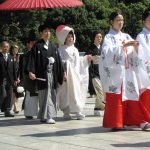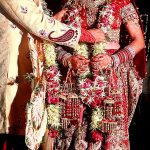Spain has some of the most unique, vibrant, and beloved marriage traditions around the world. From the ceremony to the culinary experience, there is something for everyone. It is a celebration of the love and life of the couple. Hence, you should add attending a Spanish wedding to your list of experiences.
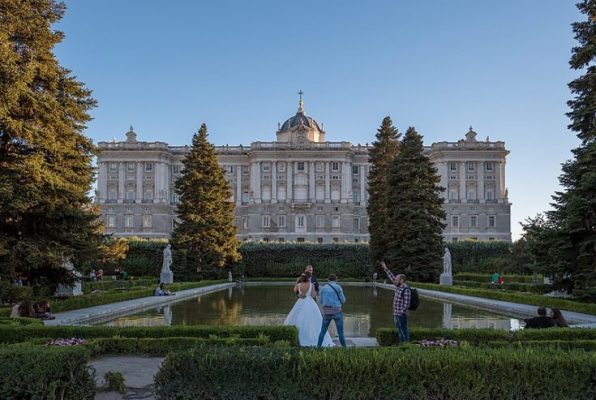
Background
Weddings are considered to be one of the most significant celebrations in Spain. A traditional ‘bodas’ or wedding is usually conducted according to the Catholic church. The number of guests depends on the couple but it is usually around 200 at the least.
In the past, weddings began in the afternoon and lasted all the way into the next morning. Today, weddings don’t last as long but are significantly longer than what you might be used to. Most commonly, weddings are held in the morning and go on till the early morning hours.
Clothing
Traditionally, in most Spanish weddings, the bride and groom only saw each other on the day of the wedding. However, this custom is changing, and nowadays it is more common for the couple to engage in activities together before the marriage ceremony.
Spanish brides also wear black dresses on their wedding day. This is very different from the white dresses found in many other Catholic weddings.
The black gown is meant to represent a lifelong commitment to the relationship, even in the face of death. But these days, due to westernisation globally, many brides in Spain are opting for white dresses.
Mantilla Lace Veil
To go along with the black dress, Spanish brides traditionally wear a black veil made from lace called a ‘mantilla’.
The veil is made of intricately woven lace and from the 17th century onwards, it was very common for Spaniard women to wear a mantila every day. In modern times, however, the wearing of the veil is reserved exclusively for special occasions like weddings.
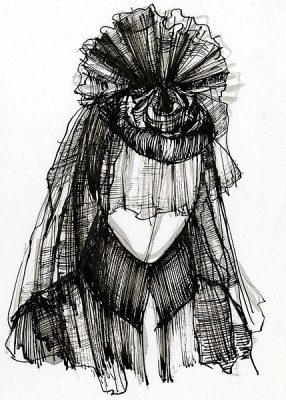
Bridal Rings
When the couple begins their engagement, the bride wears their engagement ring on the left hand. After the wedding, the wedding ring is worn on the right hand.
This is very different compared to many other cultures in the world where both rings are either worn on the same finger, or the wedding ring is worn on the left hand.
Gold Coins (Las Arras)

One long-standing tradition that still continues in Spain is the gifting of Las Arras or gold coins to the couple. These have been historically given to the bride from the groom as a symbol of his commitment to the marriage.
The coins are usually carried in a specially made bag or container and gifted to the bride during the ceremony. There are 13 coins in total that are given, representing Jesus and his 12 disciples. Often, the coins will be inscribed with the wedding date and the couple’s names.
Orange Blossoms
Orange trees can be found everywhere in Spain and form an important part of the traditional Spanish marriage experience.
They are considered symbols of good luck and are often used as highlights for decoration. Not just for the venue, but for the bridal bouquet, the wedding cake, and even scattered around on the dance floor!
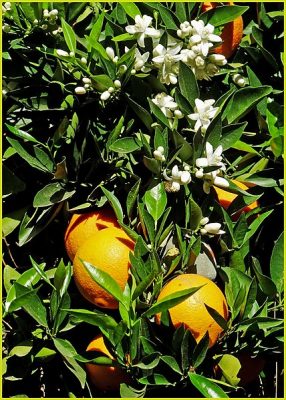
Cake Cutting Ceremony
The Spaniards take their cake-cutting to a different level entirely. Usually, the cake-cutting ceremony is conducted after the couple has taken their vows but before the wedding reception.
The couple is handed a ceremonial sword which they use to slice up their wedding cake while the guests all cheer and clap. No one knows when the sword tradition began, but you’ll be hard-pressed to find a Spanish couple cutting a cake with a plastic knife at any wedding!
Libro De Familia
The Libro De Familia or the family book is an important document in Spain and is considered the official record of the family for generations. It is updated with new information every time there is a birth, marriage, or death in the family.
The couple usually receives the book on their return from the honeymoon. It is delivered by the same officials who deliver their marriage certificates. The book is considered a family heirloom and is handed down from generation to generation to keep the family history safe.
Sequidillas Manchegas
Originating from the region of La Mancha, the Sequidillas Manchegas is a Spanish folk dance that is traditionally found in almost all wedding ceremonies in Spain. The dance is usually taken part in by the bride and groom, and their parents and grandparents.
The dance begins when the wedding guests pay the bride with some money. This is meant as a gift for young people to begin their new lives together. The dance is also considered a way for the older generation to wish the young ones good luck and happiness for the future.
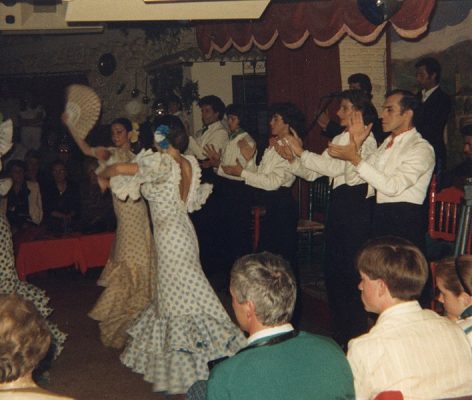
Paella and Seafood
Spanish cuisine has had seafood as a part of its culture for a long time. Paella is a dish that originated in the country and has taken on different flavours depending upon the region in which it is cooked.
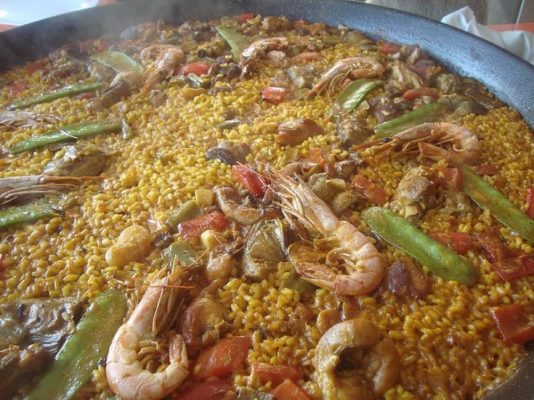
Usually, the main contents of paella consist of a mixture of seafood like fish, lobster, prawn, and clams mixed with rice and vegetables. It is traditionally cooked on an open flame and in a large, flat frying pan.
Once the banquet has been laid out, all the guests are served the paella from one large pan.
Cutting the Groom’s Tie
Another Spanish wedding custom is the cutting of the groom’s tie. After the wedding ceremony has been completed, the groom’s friends will take the tie from the groom. They will then cut it into small pieces with a pair of scissors. These pieces are then sold to the guests in attendance at the wedding.
This custom is said to bring good fortune to the couple. And the money raised from the guests is gifted to the couple to be used on their honeymoon.
Head Table of Six
The final Spanish wedding custom is the head table where the bride and groom will sit during the rest of the wedding festivities.
This table is reserved for the bride and groom and their parents. This is meant as a way to symbolise the union of the two families moving forward. And also as a way to show gratitude and respect towards the elders.







